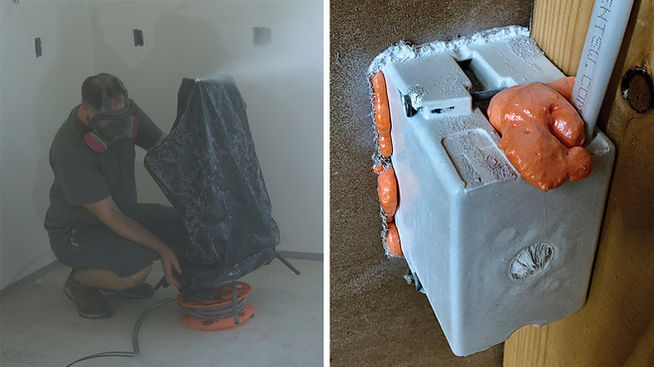top of page
What is AeroBarrier?
AeroBarrier is a patented building sealing process. The AeroBarrier system, similar to the Blower Door test, creates an air overpressure in the interior and sprays a special water-based sealant into the air in the form of an aerosol. Together with the air flow, these sealant particles are carried to leaks in the building structures, where they accumulate and tightly seal air leaks.
Why choose AeroBarrier?
Unrivaled efficiency
Traditional manual building sealing methods can be time-consuming, expensive and may not achieve the desired results. AeroBarrier allows you to seal at any level without guessing, without looking for leaks and with a guarantee!
Transparent process
The progress of sealing the building is measured in real time, and when the desired tightness is achieved, a final measurement is taken. The AeroBarrier system automatically generates a work report with all relevant data about the process and the result achieved.
The most profitable investment
Building sealing is the most profitable investment in energy efficiency with the fastest payback period.
AeroBarrier Gallery
How is the air permeability of buildings measured?
The airtightness of buildings is measured using specialized equipment that creates a certain overpressure or rarefaction in the premises and calculates the amount of air escaping or entering. The building air permeability test or "Blower Door test" is a globally recognized method for evaluating building tightness.
Blog articles
FAQ
bottom of page




















